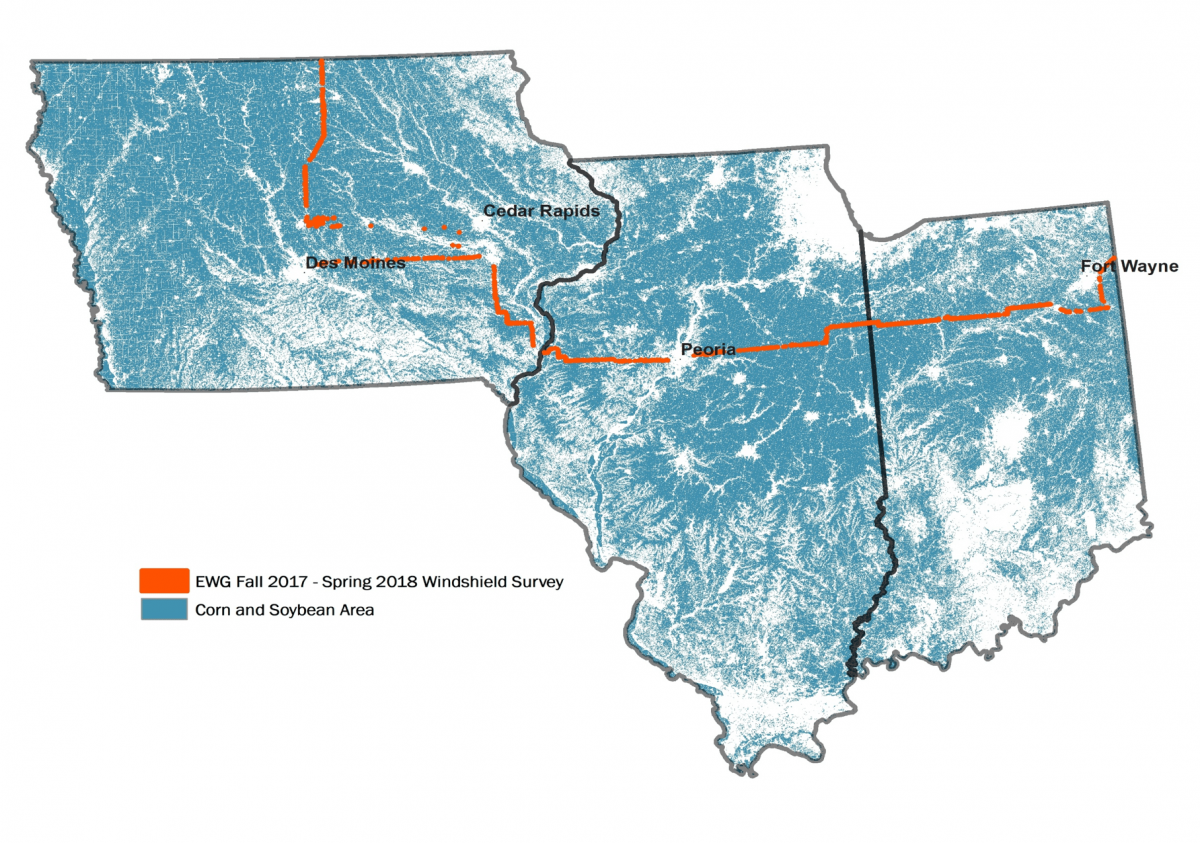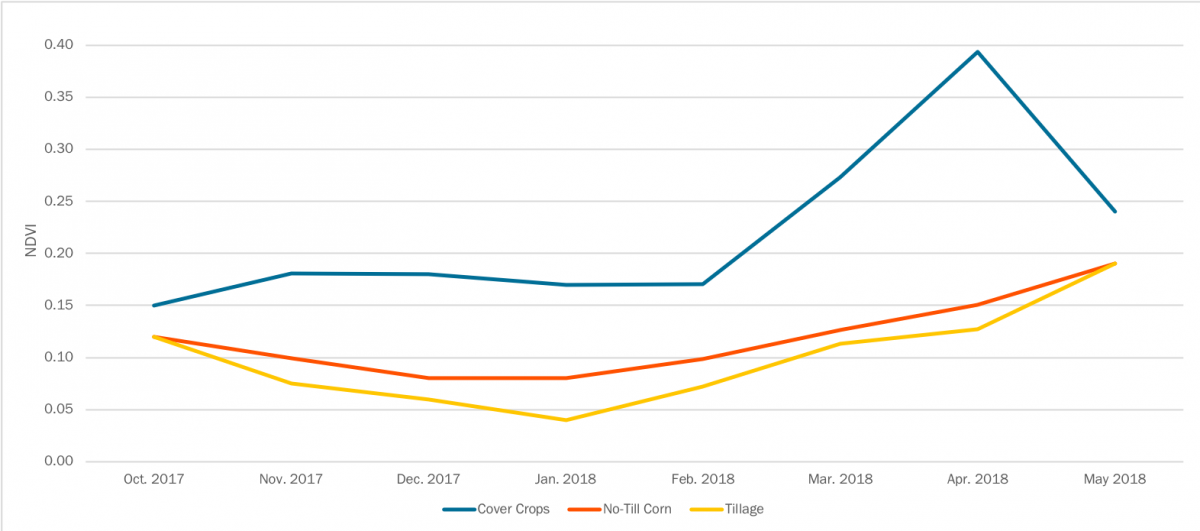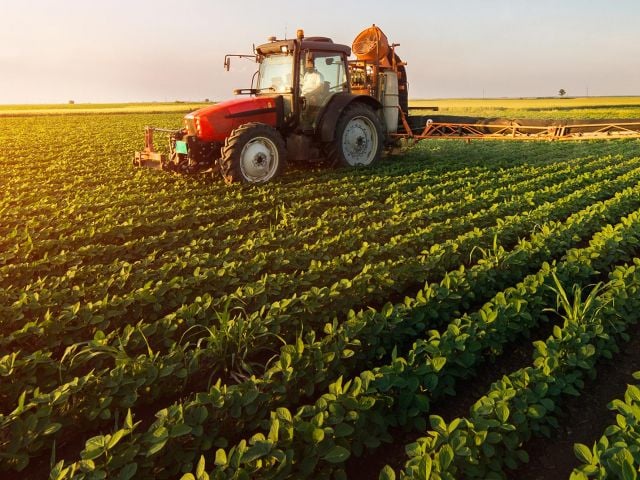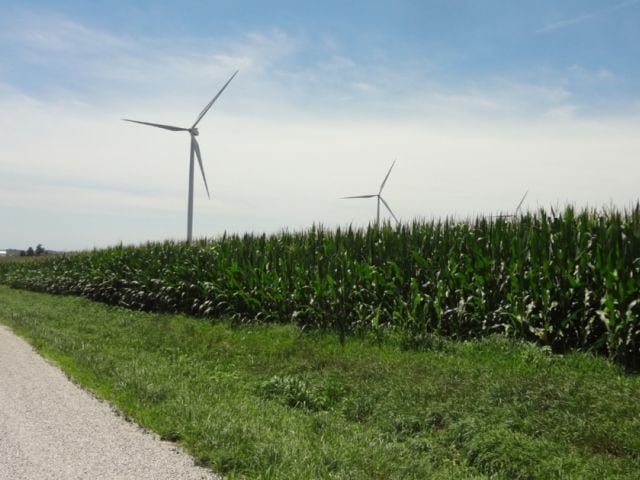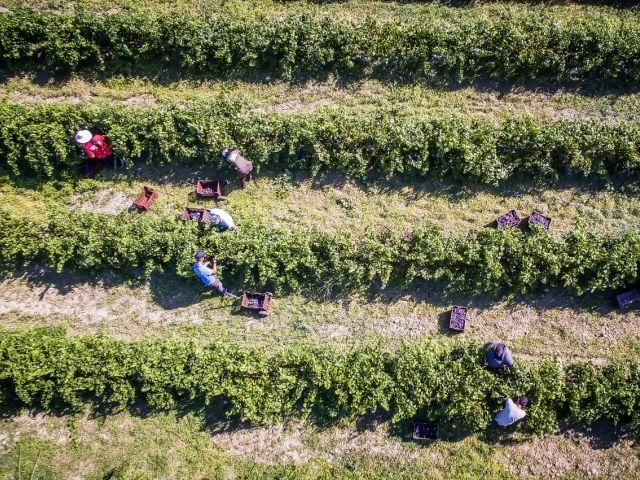
 In the summer, millions of lush green acres of corn and soybeans blanket the Midwest. Come fall, many harvesters scrape crop fields until they are black and barren, exposing large swaths of vulnerable land to heavy rains, melting snow and powerful winds. Until the following year’s planting, soils laden with toxic farm chemicals are left to wash downstream, where they may contaminate sources of drinking water.
In the summer, millions of lush green acres of corn and soybeans blanket the Midwest. Come fall, many harvesters scrape crop fields until they are black and barren, exposing large swaths of vulnerable land to heavy rains, melting snow and powerful winds. Until the following year’s planting, soils laden with toxic farm chemicals are left to wash downstream, where they may contaminate sources of drinking water.
But there is a highly effective strategy that can both reduce polluted runoff and hold the soil in place: planting cover crops.
These are off-season crops, such as cold season grasses and legumes, that absorb nitrogen and phosphorus and preserve precious soil. Done right, cover crops make farming more sustainable in the face of flooding and drought, conditions that climate change is making more frequent, severe and volatile.
To see how widely this strategy is being adopted, EWG used satellite imagery to track the use of cover crops in three key farm states – Illinois, Indiana and Iowa. We tracked the growth of cover crops in the fall of 2015 and spring of 2016, and again during the fall of 2017 and spring of 2018. (The 2015-16 seasons were defined as the 2015 cover crop year, and the 2017-18 seasons as the 2017 cover crop year.)
Cover crop acreage up, but still miniscule
The good news: All three states saw a net increase in cover crop acres in those years. Satellite photos showed that from the 2015 cover crop year to the 2017 cover crop year:
- In Illinois, cover crops increased from approximately 489,000 acres to 760,000 acres.
- In Indiana, from 795,000 acres to 878,000 acres.
- In Iowa, from 592,000 acres to 907,000 acres.
The not-so-good news: Even with the increase, acres protected by cover crops remain a tiny percentage of row crop acres in these three states. In Illinois only 3.6 percent of all corn and soybean acres were protected by cover crops, in Indiana 7.8 percent and in Iowa 3.9 percent.
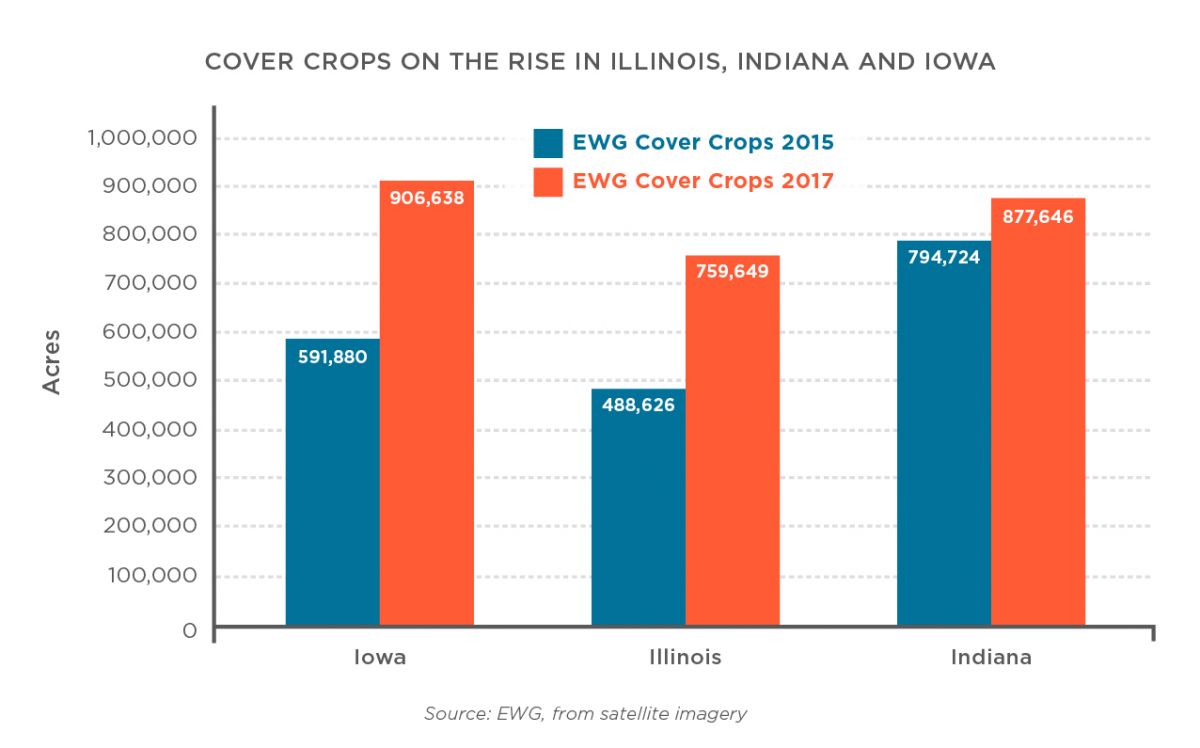
Cover crop acreage increased in 88 percent of Illinois counties (90 of 102 counties), 68 percent of Indiana counties (63 of 92) and three-fourths of Iowa counties (74 of 99). The average gain was more than 3,100 acres per county in Illinois, more than 2,400 acres per county in Indiana and more than 5,100 acres per county in Iowa.
Some regions, such as western Iowa and southern Illinois, saw above-average growth of cover crop acreage compared to the entire state, whereas in Indiana, growth was more evenly distributed. But other areas saw a drop in acreage. In 12 Illinois counties, the average loss was about 1,200 acres; in Indiana, 29 counties had an average loss of 2,300 acres; and in Iowa, 25 counties had an average loss of 2,700 acres.
Counties that lost or gained cover crop acres between 2015 and 2017

Source: EWG, from satellite imagery
Comparing EWG’s findings with other research
A report from Iowa Learning Farms projected 880,000 cover crop acres in Iowa in 2018, close to what EWG found for the 2017 cover crop year. This total is up 120,000 acres from the group’s report of 760,000 in 2017. The Indiana State Department of Agriculture reported that in 2017 there were 935,000 acres of cover crops planted atop corn and soybeans. EWG detected 878,000 acres in Indiana during the 2017 cover crop year. We were unable to find relevant data for total cover crop acres in Illinois.
EWG’s findings align closely with the figures reported in the federal Department of Agriculture’s 2017 Census of Agriculture. The census recorded just over 973,000 cover crop acres in Iowa in 2017, compared to EWG’s estimate of 906,000 acres in the 2017 cover crop year. In Illinois, USDA reported more than 708,000 cover crop acres, slightly less than EWG’s estimate of 759,000 acres. According to the census, Indiana had 936,000 acres of cover crops, more than the 877,000 acres EWG found.

Conclusion
Although Iowa, Illinois and Indiana have made substantial progress in cover crop acreage in only two years, it is still miniscule compared to the effort needed to measurably slow soil erosion and protect water from agriculture pollutants. The Iowa Nutrient Reduction Strategy recommends that 12.6 million acres, or around half the state’s corn and soybean acres, be planted with cover crops. Our finding of 907,000 acres of cover crops in Iowa falls woefully short of that goal. In Indiana, 4.7 million additional acres of cover crops are needed to protect half of the corn and soybean acres in that state. In Illinois, an additional 9.8 million acres of cover crops are needed to protect half the corn and soybean acres.

